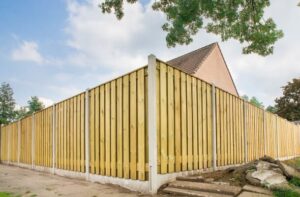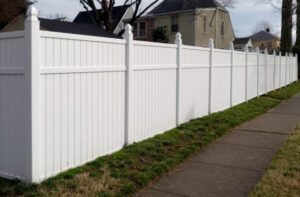Demographics About Quincy, Massachusetts
Quincy is a mid-sized city located in Norfolk County, Massachusetts, United States. As of the 2020 census, Quincy had a population of 94,554, making it the 8th largest city in Massachusetts.
Quincy has a diverse population and has seen significant demographic shifts over the past few decades. This article will provide an in-depth look at the demographics of Quincy – exploring population trends, age distribution, racial makeup, household income, education levels, and more.
Population and Growth Trends
The current population of Quincy is estimated at 94,554 as of 2020. Quincy has seen steady population growth over the past century:
- In 1920, the population was recorded at 47,876
- By 1950 it had grown to 84,097
- In 1980 the population was 84,900
- By 2000 it had reached 88,025
So while growth was rapid in the early 20th century, it has slowed in recent decades. The largest decennial population growth was between 1920-1930 when it increased by 11,918 or 24.9%.
Population density in Quincy is quite high at 6,800 people per square mile. This ranks 38th among cities and towns in Massachusetts. Quincy is considered part of the Greater Boston metropolitan area.
Some key factors that have influenced Quincy’s population trends include:
- Post-war economic expansion in the 1940s-1960s
- Loss of manufacturing/industrial jobs in the 1970s-1990s
- Revitalization and urban renewal projects that have attracted new residents
- Immigration, especially of Asian groups
- Suburbanization – shift of residents from Boston to Quincy
Age Distribution
In terms of age distribution, Quincy has a slighter older population compared to state and national averages:
- Median Age: 41.3 years
- Under 18 years: 17.5%
- 18-44 years: 27.4%
- 45-64 years: 27.6%
- 65+ years: 27.6%
Some key observations:
- Over a quarter (27.6%) of the population is retirement age (65+) compared to just 16.5% nationwide.
- Only 17.5% are under 18 compared to 22.3% of the U.S. as a whole.
- The large 45-64 and 65+ age groups reflect the aging of the baby boomer generation.
- The millennial generation (25-40 years old) is underrepresented.
The higher median age indicates Quincy has an older population overall compared to state and national averages. This has implications for housing, healthcare, transportation and other services needed by seniors.
Racial and Ethnic Makeup
Quincy has become significantly more diverse in recent decades:
- White: 60.0%
- Asian: 27.0%
- Black or African American: 6.5%
- Hispanic or Latino (of any race): 7.0%
Compared to Massachusetts as a whole, Quincy has a much higher Asian population percentage and a lower white population. Key aspects of Quincy’s racial/ethnic makeup:
- The Asian population has grown rapidly since 1980 when it was just 1.6% of residents. Today at 27% it represents a diversity of ethnicities including Chinese, Vietnamese, Indian, Cambodian, and more.
- The white population has declined from 97% in 1980 as other groups grew. But whites still make up a majority at 60%.
- Black residents make up 6.5% – on par with the state average.
- Hispanics are a smaller share at 7.0% compared to 12.6% statewide.
Quincy has a foreign-born population of 28%. Top countries of origin include China, Vietnam, India and Italy. This increased diversity has enriched Quincy’s culture but also created new needs for integration and inclusion.
Household Income
The median household income in Quincy is $74,551 compared to $85,843 for Massachusetts as a whole. 22.6% of Quincy residents live below the poverty line.
Key income stats for Quincy:
- Median household income: $74,551
- Per capita income: $33,809
- Families below poverty level: 11.5%
- Individuals below poverty level: 22.6%
So while Quincy remains a relatively affluent community, there are significant socioeconomic disparities:
- Nearly 1 in 4 residents live below the poverty line. Some particularly hard-hit groups include Hispanic, Black and Asian households.
- Median income is 13% lower than statewide average. Cost of living remains high in the Boston metro.
- Wealth inequality is an issue with some very high earners alongside those living in poverty.
Addressing poverty and the shortage of affordable housing are key priorities for the city. But Quincy also benefits from higher earning managers/professionals who work in Boston and commute to Quincy’s middle/upper middle class neighborhoods.
Education
Quincy has high levels of educational attainment:
- 94.5% have a high school degree (vs. 90.9% statewide)
- 60.2% have a bachelor’s degree or higher (vs. 43.4% statewide)
The city’s two largest school districts are Quincy Public Schools and North Quincy High School.
Quincy is also home to several colleges:
- Quincy College – public, 2-year community college
- Eastern Nazarene College – private, Christian liberal arts college
- Laborers’ International Union of North America (LIUNA) Training Center
This combination of top-rated primary schools and access to higher education helps foster a skilled workforce and more stable economic base. Education levels tend to be higher than Massachusetts averages.
Housing and Living
Most of Quincy’s housing stock consists of medium density urban residential development. Key housing stats include:
- Total housing units: 40,328
- Owner-occupied: 60.5%
- Renter-occupied: 39.5%
- Multi-unit buildings: 50%
- Median home value: $406,400
- Median rent: $1,516
Compared to Massachusetts, Quincy has a higher rate of renters, denser housing stock and lower median rents. Home values are also about 20% below the state median of $512,000.
The cost of living index for Quincy is 143 – higher than the U.S. average of 100 but lower than Boston proper at 168. Key living stats:
- Average commute: 32 minutes by car, 51 by public transport
- Walkscore: 90 (very walkable)
- Parks: Over 1,500 acres of parks and urban wilds
- Crime rate: Safer than 41% of U.S. cities
So Quincy offers good urban livability at a more affordable price point compared to downtown Boston. Proximity to jobs, transit, parks, and a low crime rate make it an attractive suburb.
Conclusion
In summary, Quincy has undergone significant demographic changes in recent decades. Once a predominately white, blue-collar manufacturing hub, it is now a diverse community of over 90,000. An aging population and continued Asian immigration are key trends. Income and education levels are slightly higher than state averages. Going forward, ensuring housing affordability and economic mobility for all residents are top policy priorities. Understanding these demographic trends helps Quincy plan for the future and meet the evolving needs of its people.
Hours
Monday: 9:00 AM – 5:00 PM
Tuesday: 9:00 AM – 5:00 PM
Wednesday: 9:00 AM – 5:00 PM
Thursday: 9:00 AM – 5:00 PM
Friday: 9:00 AM – 5:00 PM
Saturday: 9:00 AM – 5:00 PM
Sunday: 9:00 AM – 5:00 PM
Contact Us.
Get Solutions For All Fencing Services
Every day from
9:00 — 5:00
Call to ask any question




